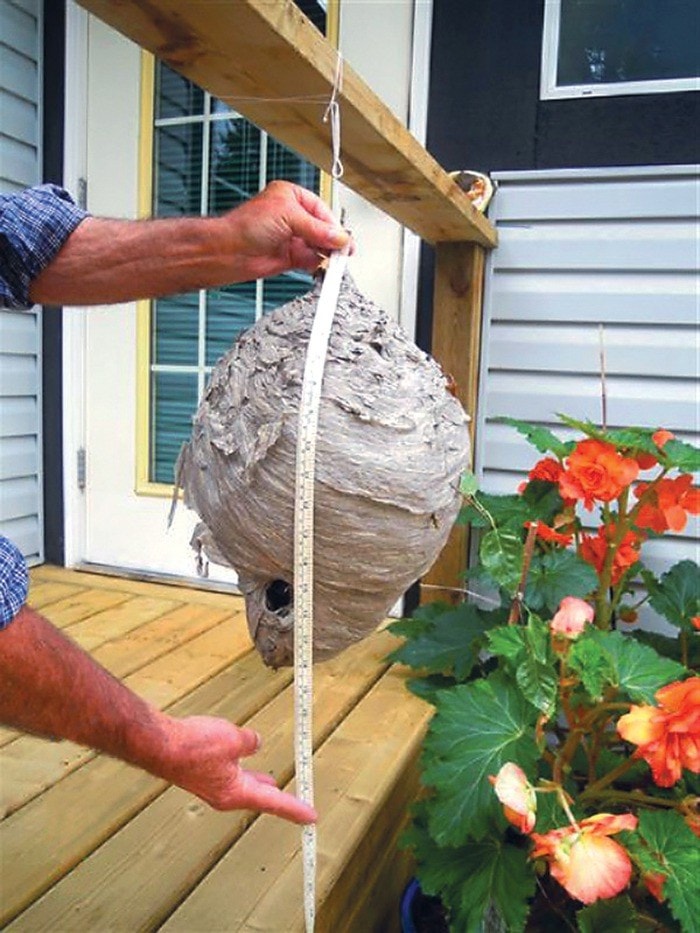Pop quiz: What’s made of paper, looks like an overstuffed grey football, and strikes fear into the heart of most human beings?
In autumn, when falling leaves unveil their presence, the answer is…a wasp nest. Doug and Kathryn Mace of Campbell River found such a nest (thankfully vacant) last week in their birch tree. Measuring 42 cm high, the nest is larger than most found in this area.
Dr. Rob Cannings, Curator of Entomology at Victoria’s Royal British Columbia Museum, says the nest was likely made by one of two species: Bald-faced Hornet (Dolichovespula maculate) or Aerial Yellowjacket (D. arenaria).
The Bald-faced Hornet (not native to North America) is not a true hornet but rather a big, black and white yellowjacket.
Aerial Yellowjackets are a smaller (black and yellow) species that nest in exposed places (such as tree branches or the outside eaves of buildings), thus “aerial.”
Some wasp species build nests underground. One September day, while picking blackberries, I ventured too close to a subterranean wasp nest, only to be stung repeatedly by the nasty little vipers.
Usually, wasps are active long into autumn, and Dr. Cannings expressed surprise that this colony had died out so early during this year’s fair-weather fall. The Mace’s rather large colony may have had over 300 workers.
In the remarkable nest-building process, female worker wasps collect wood bits and chew them into a pulp, mixed with their own saliva. The workers add the resulting pulp to the structure, spreading and flattening it with their legs and mandibles. The outer paper cover provides insulation and temperature control for the multiple combs (containing cells) within.
Yellowjacket colonies last only one season; they do not overwinter, and the nest is never re-used. The inseminated queens leave the nest and seek out loose tree bark or other winter shelter.
Some may wonder how a paper wasp nest withstands the island’s torrential rains. Dr. Cannings says there is probably a chemical in the wasp saliva that makes the material impervious to water.
Teach children never to throw objects at wasp nests, an action sure to provoke the insects to attack.
E-mail Christine at: wildernesswest@shaw.ca.
